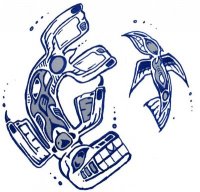This spring and summer, I’ve had a coveted placement through the Canadian International Development Agency (CIDA) to practice sustainable development in a little known archipelago in the Southern Antilles. Known to the wider public as the tropical backdrop in Pirates of the Caribbean, the small island nation of St. Vincent & the Grenadines has lured many foreigners to its shores, from international organizations, wealthy Hollywood types, to coastal resource
developers. The fascination may be due to islands’ remoteness along the Southern Antilles chain, leaving it relatively unscathed by the environmental despoliation so common in the more colonial North. Here, foreigners come and fall in love with a glimpse of beaches, reefs, and mountains of a Caribbean that once was.
The attention has not always been beneficial, however, and it is in this context of suspicion, grudges, and hope which has shaped my placement and provided the most insights into sustainable development. The worst examples of foreign development blight the seascape in ruin, such as a foreign company’s failed marina project near Ashton, on Union Island, where I lived. Despite a damning environmental impact assessment, the company slashed through Mangrove, dredged up coral, and constructed a long causeway of steel pilings and concrete, only to go bankrupt and leave the lagoon in devastation. The abandoned causeway has blocked tidal flushing of the lagoon, killing off most coral and conch, leaving stinky stagnant water, and stunting the growth of the nearby mangrove forest.
Enter myself: a youthful ornithologist from the Coady International Institute on a six month placement. I’ve been charged with setting up an ecosystem monitoring regime for the lagoon, as a restoration project attempts to reestablish the tidal flushing (funded by a US
grant through the Neotropical Migratory Bird Conservation Act). In this, I’ve had perhaps the paradise job: wading in hipboats through mangrove forests, recording sightings of rare exotic birds, taking water quality samples along emerald blue coastlines, and writing bird
identification software to train local persons. What could be better than working for the common good, learning a new culture, and living on an Island paradise? Such is the allure of young persons all across Canada enrolling into the Development field.
If it seems too good to be true, it is. This development model of parachuting in a foreign person to solve other peoples’ problems has long been suspect. Despite good intentions, money, and the willingness to work hard, nothing lasting will happen without local persons firmly in the driver’s seat. This came to lightly lividly as one of my CIDA-funded colleagues had to be pulled back from a Grenadine Marine Protected Area, arguably fighting the good fight for principles of environmental sustainability and community control, but doing so with too much initiative and not enough local oversight. My predecessor was brought to tears as a local organization lambasted her organization for being too controlling and arbitrary with funding. In contrast, a third organization charged us with being too lax about finances, ceding too much control to a local strongman, who then spirited away the funding. Such is the knife edge of participatory development: on the one hand, people are sensitive to the faintest whiff of paternalistic control by foreigners, and on the other hand, there is sadly an all-too-real risk of “take the money and run” in the majority world.
These lessons come late, but I may have stumbled into a way forward while struggling with a macroalgae mariculture cooperative, who had its own negative history with development NGOs. Initially frustrated with lost data and things not getting done, the slow pace allowed me time to absorb Island culture and build relationships with community groups. This culminated in a “baptism by fire” airing of grievances which paved the way for frank discussions and genuine friendships. Relationships are everything on Union Island, both as a way “in” to get things moving, and as the glue which governs people’s sense of responsibility. We’ve since won funding through the United Nations Development Programme’s Global Environmental Facility, to start capacity building and environmental monitoring.
Through the Coady International Institute Youth-In-Partnership Program, I’ve come to see international development as being about building bridges—linking the highly technical and micro-managed world of donor organizations with the realities of working on-the-ground in places abroad. Young persons interested in pursuing a life in development need to be able to listen, be likeable, and be able to straddle two worlds fluently.
